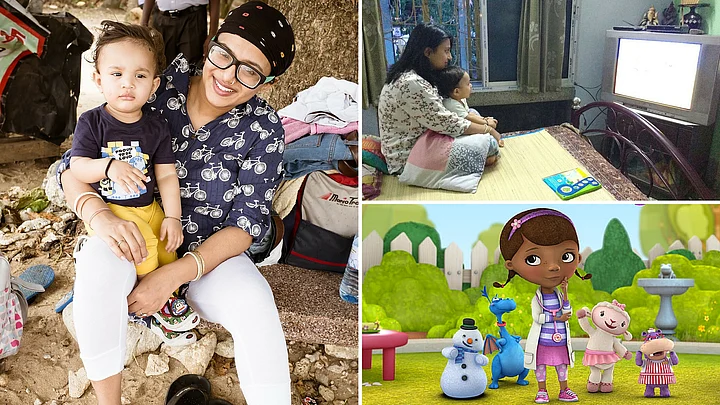As the temperature continues to soar in Amdavad, there isn’t much I can do in the name of summer fun with my toddler. Happy in the comfort of our home, we watch an assortment of cartoons, literally remote picked by my child.
It wasn’t long before I realised that all the animation he watched was foreign-made – Baby TV and Disney Junior being his favourites. He was getting to hear much English – and picking up absolutely zero Hindi. Deciding to pepper his cartoon education with some vernacular, I flicked a few channels and settled upon a very popular cartoon show called Bandbudh Aur Budbak.
Ten minutes into the show I was disappointed.
I don’t know what irritated me more – the fact that my son lost interest and got up, or the show.
The story is about two 10-year-old boys Badrinath and Budhadeb who are best friends and have a common dislike towards studies. They laugh at their teachers and take advantage of the smart kid (who is, interestingly, a Sikh kid called Gyan) when homework is concerned.
The second and more problematic part of the show is the stereotyping; the class teacher Dubey Sir is a gruff Bihari, the principal, Rathi Sir is a Haryanvi and one of the female teachers is a Bengali and they all have one thing in common – they speak a horrible version of Hindi with an over-the-top regional accent influenced by Bollywood sidekicks. Even the school guard is a ‘typical’ Marathi.
The Stereotyping of Communities on Indian Cartoon Shows
I cannot begin to explain all the wrong signals it sends to me as a parent.
A child will pick up on how to behave in school – which here means skipping classes, getting punished and slighting teachers. He will understand it is okay to deliberately not take an interest in academia.
He will then learn about the various communities of the vibrant country he’s been born into, this way – Biharis are rough, pan chewing, obese people who speak in pathetic Hindi, Bengalis wear white sarees with red borders everywhere they go and say ‘oori baba’ as habit and the Haryanvis, even after becoming principals of schools, talk as if they have brought their cattle to graze on a field.
In a feeble attempt to check out more shows in Hindi, I failed repeatedly.
Pyar Mohabbat Happy Lucky is a show about two neighbours (who are dogs, I think) who speak in ‘tapori’ Hindi.
Motu Patlu and Chorr Police are also doing a great job at stereotyping the people my son will grow up to befriend in life – Sikhs, Malayalis, obese people, all of whom he will judge because a cartoon depicted them a certain way.
How Other Countries’ Cartoons Win Out
This is in stark contrast to the brilliant animation developed in other countries.
Peppa Pig, a pure delight for the young (I got addicted as well) is a cartoon show about a pig and her family. Peppa has friends, teachers, neighbours who all speak a different version of English – Peppa speaks British English while Kylie Kangaroo speaks with an Australian twang. When Peppa goes to Italy for a holiday, the animals she meets there have a lovely Italian accent. Nowhere does the accent ridicule the person speaking it. I know this for a fact because when the five-year-old girl from next door watches Peppa Pig at my place, she tries to speak English the way Peppa does.
But when she watches Bandbudh aur Budbak, she just laughs at all the characters, like they’re one big joke.
The Better Cartoons of Yore
How difficult is it for the animation industry to not just make in India but to perfect it too? Shows like Doc McStuffins on Disney teach children about health and first aid without being preachy; the Mickey Mouse Clubhouse teaches how to be resourceful –and while these are all educative programming, they never lose sight of the fun.
In fact, we don’t have to look too far for inspiration – shows like Panchatantra and Potli Baba Ki did a swell job back in the 90s! Why then, is it so difficult for the Indian producers to create a better imagined product sans the stereotypes – something kids can learn from – without developing a skewed sense of judgement?
I will keep flicking the channels in ardent hope – but till then, let cartoons that are not made in India teach my child a thing or two about life.
(Runa Mukherjee Parikh has written on women, culture, social issues, education and animals, with The Times of India, India Today and IBN Live. When not hounding for stories, she can be found petting dogs, watching sitcoms or travelling. A big believer in ‘animals come before humans’, she is currently struggling to make sense of her Bengali-Gujarati lifestyle in Ahmedabad.)
